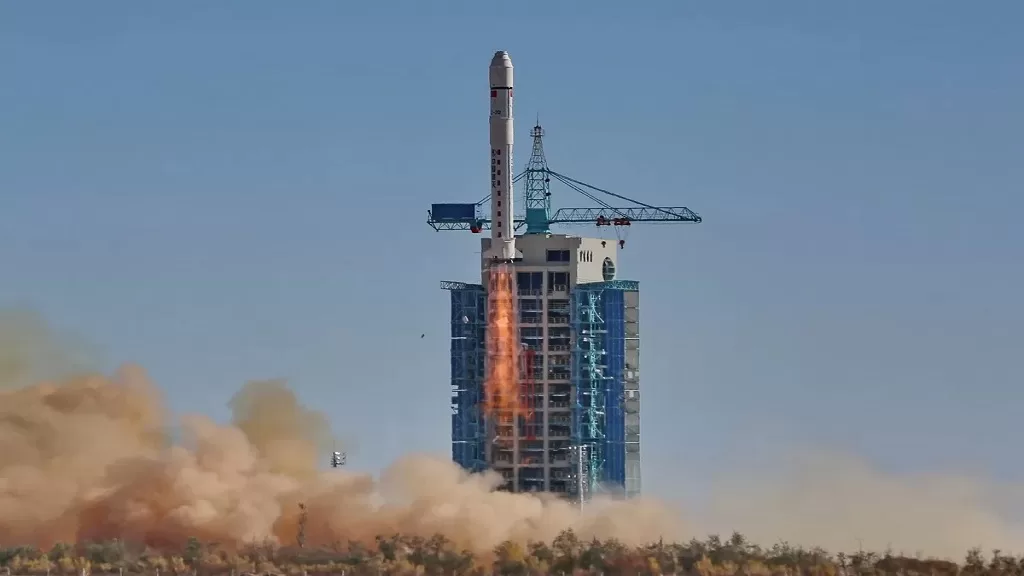China’s efforts to use its space program to transform itself into a military, economic, and technological power will soon reshape the world order. NASA Administrator Bill Nelson has warned that the Chinese regime could claim resource-rich regions of the moon as its own. In 2020, China announced plans to establish an economic zone with an output value of US$10 trillion. Clearly, it intends to gain economic benefits through the exploration of space.
In an interview with Politico on 1st January, Nelson said he was concerned that China would build scientific research facilities in a desirable area on the moon and then claim sovereignty over it. Last year, China built a space station orbiting the Earth and performed several missions around the moon to extract samples. Beijing also plans to build an autonomous lunar research station near the moon’s south pole, which is expected to begin in 2025.
China is trying to win the space war not only for economic gain but also for strategic reasons. On 27 November last year, Nina Armagno, Chief of Staff of the US Space Force, told the Australian Strategic Policy Institute that she was concerned that China would catch up and overtake the US and possibly militarise space. According to Armagno, China is developing military space technologies such as satellite communications and reusable spacecraft, such as China’s Long March 8R, and Long March 9, as well as suborbital and orbital spacecraft.
On 20 December, Wu Yansheng, Chairman of the China Aerospace Science and Technology Corporation (CASC), outlined China’s space development goals, including manned moon landings, the establishment of space transportation infrastructure, and the provision of on-orbit services. He also revealed Beijing’s vision for space management, space law and the space domain.
According to a CASC blue paper released on 16 January, China plans to launch more than 200 spacecraft with over 60 space missions in 2023. It said that the Tianzhou-6 cargo craft, the Shenzhou-16 and the Shenzhou-17 flight missions would take place within the year to improve China’s capability of entering, using and exploring space. In 2023, the CASC will comprehensively push forward the fourth phase of lunar exploration and planetary exploration and develop the lunar probe Chang’e-7, Mars probe Tianwen-2, as well as stationary orbit-microwave detection satellite. The carrier rocket Long March-6C will make its maiden flight in 2023, while the Long March carrier rocket series is expected to exceed 500 launches in aggregate, said the blue paper.
The China Space Station (CSS) is now complete in low-earth orbit and will have more first attempts. “The Shenzhou-15 and 16 crews will have multiple spacewalks in 2023. And this is the year when we, for the first time, will see the space station’s two robotic arms link and work to support payload installation. This is the year, for the first time, we will see man and cargo go extravehicular together at the same time,” the China Academy of Space Technology (CAST) revealed.
The year could also see a record number of satellites go up. China Great Wall Industry Corporation, under CASC, announced that the company would see over 90 satellites launched into space. “In 2023, we will still frequently see missions where one rocket carries multiple satellites. Such arrangements show our rockets’ range and capabilities and how fast the commercial space sector is developing. Right now, it’s at its peak,” an official said.
China’s overall moon and space strategy focus on building its capabilities rather than relying on international cooperation. In the next 10 to 15 years, Beijing plans to let the Chang’e robot perform three missions to the moon, establish the International Lunar Research Station (ILRS), and also plan to carry out Mars sampling and return missions. Beijing plans to land its own astronauts on the moon by 2030 and is also considering using nuclear power instead of rocket engines to send the spacecraft, thereby reducing the time needed to get to and from Mars from 900 days to 500 days. These are the points of Chinese Communist Party leader Xi Jinping’s strategic plan to build a powerful space nation.
While the moon and Mars colonisation is a distant prospect, China and Russia already have “killer satellites” that could destroy US satellites and wreak havoc on ground forces. In order to curb China’s space ambitions, former US President Donald Trump established the Space Force in 2019 as the sixth branch of the US military. The unit is part of the US Air Force, and the relationship between the two is similar to that between the Marine Corps and the Navy. On 14 December 2022, the US Space Force launched its first overseas detachment, Space Force Korea (SPACEFOR-KOR), tasked with overseeing the space operations of the US Indo-Pacific Command.
At present, the United States and China are locked in a space race, just like the competition between the United States and the Soviet Union 60 years ago. However, the competition between the United States and China involves greater stakes. The two are showing momentum and, more importantly, vying for the dominance of the moon and Mars. With modern militaries relying on satellites to communicate, navigate and guide rockets, the supremacy of space could be a defining factor in future warfare.
ipcsc.in

